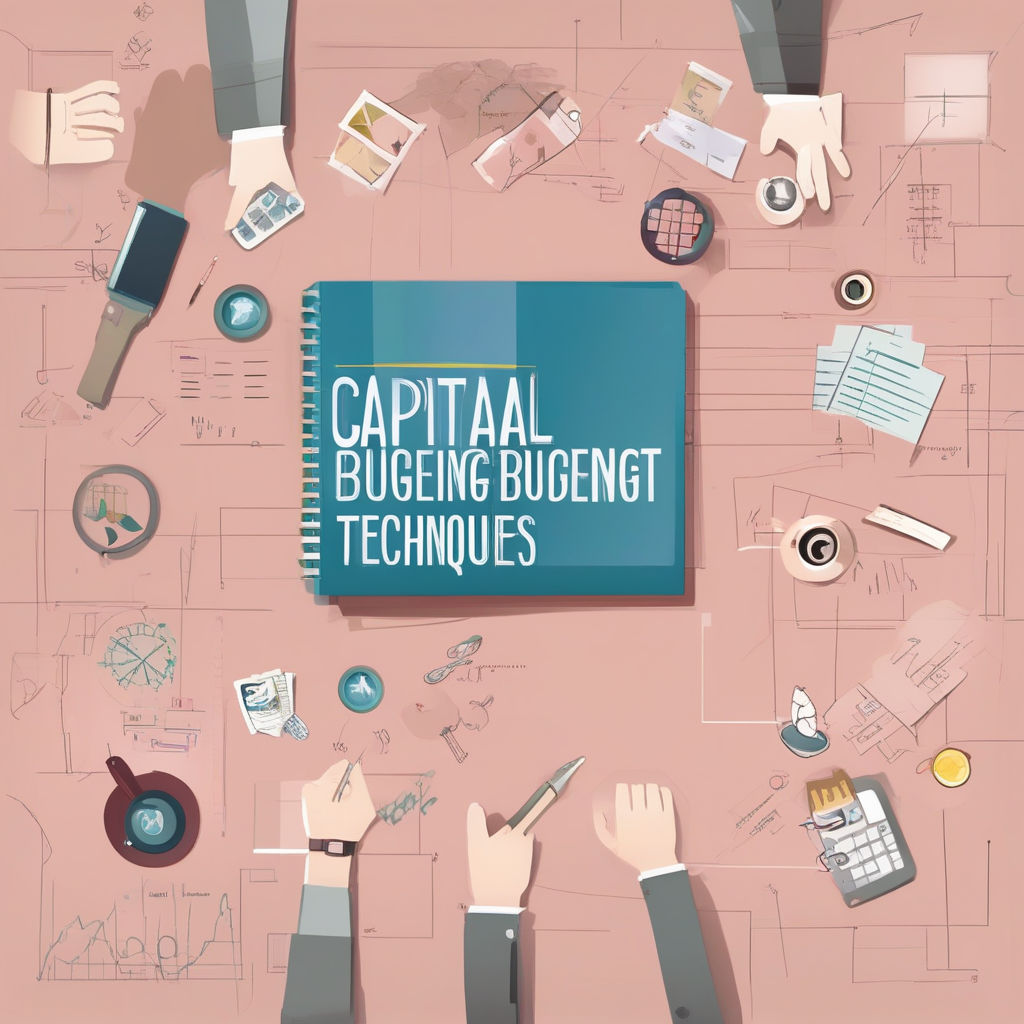Introduction
Welcome to the exciting world of corporate finance! Today, we’re diving into something called “Capital Budgeting Techniques.” Sounds fancy, right? Don’t worry—it’s actually pretty cool once you understand it. Think of capital budgeting as a way businesses decide where to spend their money. Imagine you have some savings and need to decide between buying a new video game or a bike. You’d think about which one would make you happier or be more useful. Companies do the same thing, but instead of video games and bikes, they decide on things like new machines, buildings, or even big projects.
Capital budgeting helps companies figure out which projects are worth spending their money on. It’s like a magic tool that helps businesses grow bigger and better. Ready to explore these techniques? Let’s jump in!
H1: What is Capital Budgeting?
Capital budgeting is like a decision-making process for businesses. They have to figure out where to invest their money so they can make even more money. Companies use capital budgeting to decide on projects, like building a new factory or launching a new product. The goal is to pick projects that will bring in the most profit in the long run.
H2: Why is Capital Budgeting Important?
Capital budgeting is super important because it helps companies make smart choices. Without it, they might spend money on projects that don’t really help them grow. Imagine buying a game you never play—that would be a waste, right? Capital budgeting helps companies avoid those kinds of mistakes. It ensures that every dollar spent is worth it.
H3: Key Capital Budgeting Techniques

Let’s dive into the different techniques companies use to decide where to invest their money. Each method has its own way of looking at potential projects.
H4: 1. Payback Period
The Payback Period is like figuring out how long it will take to get your money back. Imagine you lend your friend some money for a lemonade stand. You want to know how many days it’ll take before they’ve made enough money to pay you back. Companies do the same thing with projects. They look at how quickly the project can pay back the initial investment.
H4: 2. Net Present Value (NPV)
Net Present Value is a fancy way of saying, “Is this project going to make us money in the future?” NPV looks at all the cash the project will bring in, subtracts the costs, and tells the company if the project is a good deal. A positive NPV means the project is worth it. A negative NPV? Not so much.
H4: 3. Internal Rate of Return (IRR)
The Internal Rate of Return (IRR) tells companies how much they can expect to earn on their investment. It’s like looking at the percentage you’ll get back when you invest your money. If the IRR is higher than what the company usually earns, it’s a green light to go ahead with the project!
Key Features of Capital Budgeting Techniques

| Feature | Description |
|---|---|
| Decision-Making Tool | Helps companies choose the best projects. |
| Profit Prediction | Estimates future profits from investments. |
| Risk Assessment | Evaluates risks associated with projects. |
| Cash Flow Analysis | Looks at incoming and outgoing cash. |
| Long-Term Focus | Focuses on long-term benefits and growth. |
| Resource Allocation | Ensures funds are used wisely and effectively. |
| Cost vs. Benefit | Weighs the costs against the potential benefits. |
| Performance Metrics | Uses metrics like NPV and IRR for decisions. |
H3: Other Important Techniques in Capital Budgeting
Apart from the main techniques like Payback Period, NPV, and IRR, companies often use other methods to make their decisions. Let’s look at some of them:
H4: 4. Profitability Index (PI)
The Profitability Index helps companies decide if a project is worth more than it costs. If the index is above 1, it means the project will bring in more money than it costs, which is great news for the company!
H4: 5. Discounted Payback Period
This is just like the Payback Period but a bit smarter. It considers the time value of money, meaning money now is worth more than money later. So, it helps companies decide if a project will pay back its investment soon enough.
H4: 6. Modified Internal Rate of Return (MIRR)
MIRR is a little twist on IRR. It adjusts the expected return to be more realistic, considering the cost of borrowing money. It gives a clearer picture of what the company can really expect to earn.
H2: How Companies Use Capital Budgeting in Real Life
Companies use these techniques to make big decisions. For example, a tech company might use NPV to decide if they should launch a new smartphone. A car manufacturer might look at the IRR to see if building a new factory is worth it. These decisions are crucial for a company’s success.
H2: Benefits of Using Capital Budgeting Techniques
- Better Decision-Making: Companies can choose the best projects with confidence.
- Risk Management: Helps identify and manage risks before they become problems.
- Efficient Use of Resources: Ensures money is spent where it will do the most good.
- Long-Term Planning: Supports long-term growth and stability.
H2: Common Mistakes in Capital Budgeting

Even though capital budgeting is super helpful, companies can still make mistakes:
- Ignoring Cash Flow: Sometimes, companies forget to look at the real cash coming in and going out.
- Overestimating Returns: Being too optimistic can lead to poor decisions.
- Not Considering Risk: Every project has risks, and not thinking about them can be costly.
H3: Tips for Effective Capital Budgeting
- Always Check the Numbers: Double-check calculations to make sure they are accurate.
- Consider the Time Value of Money: Remember, money today is worth more than money tomorrow.
- Look at the Bigger Picture: Don’t just focus on short-term gains—think about long-term benefits.
H2: Frequently Asked Questions (FAQs)
Q1: What is Capital Budgeting in simple terms?
Capital budgeting is a way for companies to decide where to spend their money to make the most profit. It’s like choosing which toys to buy based on which will make you happiest.
Q2: Why is the Payback Period important?
The Payback Period is important because it tells companies how quickly they can get their money back. It’s a simple way to measure if a project is worth investing in.
Q3: What does NPV mean, and why should companies care?
NPV stands for Net Present Value, and it helps companies see if a project will be profitable in the future. A positive NPV means the project will likely make money.
Q4: How is IRR different from NPV?
IRR, or Internal Rate of Return, focuses on the percentage return of an investment, while NPV looks at the total cash flow. Both are used to decide if a project is good.
Q5: What happens if a company makes a mistake in capital budgeting?
If a company makes a mistake, it can lose money or miss out on good opportunities. That’s why it’s important to use accurate techniques and make well-thought-out decisions.
Conclusion
Capital budgeting techniques are like a company’s secret weapon for making smart decisions. By carefully choosing where to invest, companies can grow and succeed in the long term. Whether it’s building new factories, launching cool products, or expanding into new markets, capital budgeting helps businesses make the best choices. So next time you think about buying a new game or toy, remember—you’re doing a little bit of budgeting yourself!
These techniques are not just about money; they are about planning for a bright future. By learning and using capital budgeting wisely, companies can ensure that every dollar spent brings them one step closer to their dreams. Ready to dive deeper into the world of finance? Stay curious, keep learning, and who knows—you might just be the next financial whiz!
